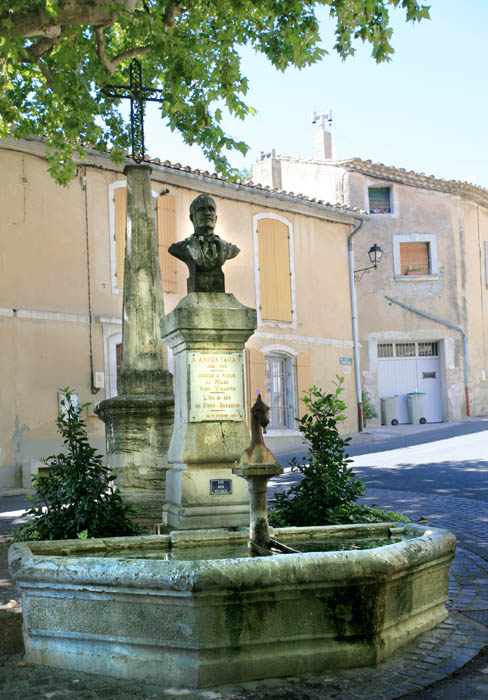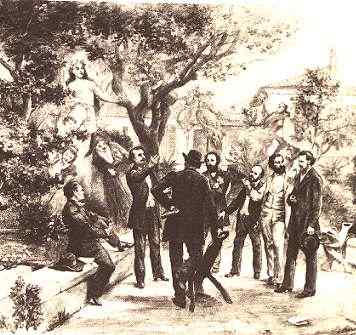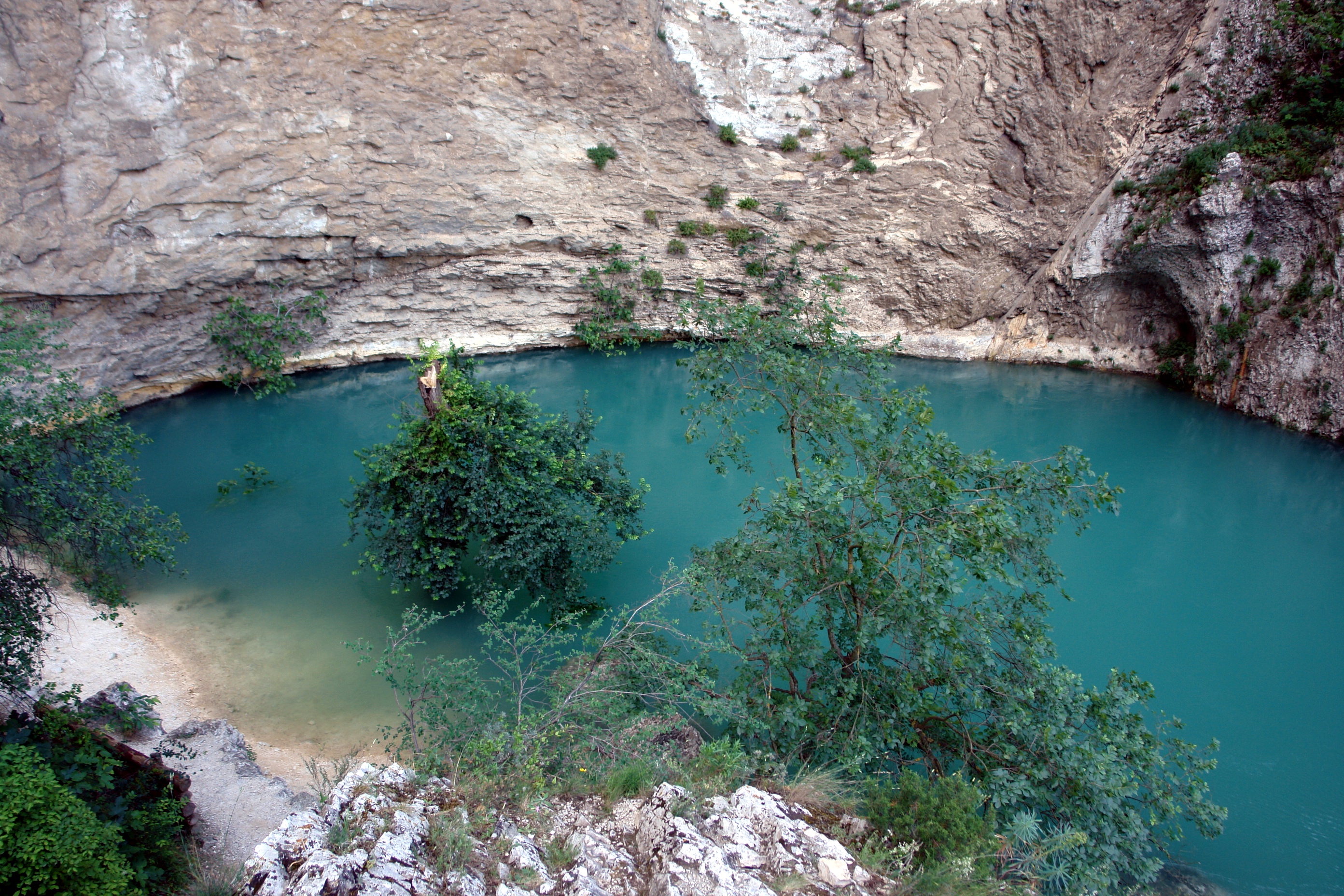|
Châteauneuf-de-Gadagne
Châteauneuf-de-Gadagne (; oc, Gadanha) is a commune in the Vaucluse department in the Provence-Alpes-Côte d'Azur region in Southeastern France. In 2018, it had a population of 3,328. History The ''Félibrige'' was founded in Châteauneuf-de-Gadagne, at Font-Ségugne, in 1854. Geography Châteauneuf-de-Gadagne is located 12 km (7.4 mi) east of Avignon. It is served by Gadagne station (opened in 1868) on the line from Avignon to Miramas. File:Chateauneuf de Gadagne 5 by JM Rosier.jpg, Fountain in Châteauneuf-de-Gadagne, with a bust of native Alphonse Tavan, one of the co-founders of the ''Félibrige''. File:Chateauneuf de Gadagne 3 by JM Rosier.jpg, Église Saint-Jean-Baptiste International relations Châteauneuf-de-Gadagne is twinned with: * Perroy, Switzerland See also *Communes of the Vaucluse department The following is a list of the 151 communes of the Vaucluse department of France. The communes cooperate in the following intercommunalities (a ... [...More Info...] [...Related Items...] OR: [Wikipedia] [Google] [Baidu] |
Alphonse Tavan
Alphonse Tavan (9 March 1833 – 12 May 1905) was a French Provençal poet. Early life Tavan was born in 1833 in Châteauneuf-de-Gadagne. He published a collection of romantic poems in Provençal, ''Amour e plour'', in 1876. He attended the fiftieth anniversary of the Félibrige on 22 May 1904 with Mistral; all the other co-founders had died. Death He died in 1905 in his hometown of Châteauneuf-de-Gadagne. Legacy His bust adorns a fountain in Châteauneuf-de-Gadagne. The ''Collège Alphonse Tavan'', a secondary school in Avignon, is named in his honour. References 1833 births 1905 deaths 19th-century French poets French male poets People from Vaucluse 20th-century French poets 19th-century French male writers 20th-century French male writers {{France-poet-stub ... [...More Info...] [...Related Items...] OR: [Wikipedia] [Google] [Baidu] |
Château De Font-Ségugne
The Château de Font-Ségugne is a historic château built at Font-Ségugne in Châteauneuf-de-Gadagne, Provence, France. It is the location of a former bastide built in the 15th century for a Catholic Church, Roman Catholic cardinal. It was the birthplace of the ''Félibrige'' in the 1850s. Nowadays, it is a winery. Location It is located on the Cancabèu (Campbeau) plateau in Châteauneuf-de-Gadagne, Provence Provence (, , , , ; oc, Provença or ''Prouvènço'' , ) is a geographical region and historical province of southeastern France, which extends from the left bank of the lower Rhône to the west to the Italian border to the east; it is bor ..., Southern France. History 15th-century house In the 15th century, a bastide was built for an Italian Roman Catholic cardinal.Maurice Pezet, ''Le Ventoux et le comtat venaissin'', Fernand Lanore, Paris, 1977, p. 2/ref> It later belonged to the Dukes of Gadagne. [...More Info...] [...Related Items...] OR: [Wikipedia] [Google] [Baidu] |
Perroy
Perroy () is a municipality in the district of Nyon in the canton of Vaud in Switzerland. History Perroy is may have been first mentioned in 910 as ''Prihoiam'' though that identification is disputed. In 1172 it was mentioned as ''Perrueis''. Geography Perroy has an area, , of . Of this area, or 62.1% is used for agricultural purposes, while or 5.9% is forested. Of the rest of the land, or 30.7% is settled (buildings or roads).Swiss Federal Statistical Office-Land Use Statistics 2009 data accessed 25 March 2010 Of the built up area, industrial buildings made up 1.4% of the total area while housing and buildings made up 14.8% and transportation infrastructure made up 10.7%. while parks, green belts and sports fields made up 2.8%. Out of the fores ... [...More Info...] [...Related Items...] OR: [Wikipedia] [Google] [Baidu] |
Félibrige
The ''Félibrige'' (; in classical Occitan, in Mistralian spelling, ) is a literary and cultural association founded in 1854 by Frédéric Mistral and other Provençal writers to defend and promote the Occitan language (also called the ) and literature. It is presided over by a (classical norm: ). Etymology The word '' félibrige'' is derived from '' félibre'', a Provençal word meaning pupil or follower. Origins Le Félibrige was founded at the Château de Font-Ségugne (located in Châteauneuf-de-Gadagne, Vaucluse) on 21 May 1854 (Saint Estelle's day), by seven young Provençal poets: Théodore Aubanel, Jean Brunet, Paul Giéra, Anselme Mathieu, Frédéric Mistral, Joseph Roumanille and Alphonse Tavan. Together, they aimed to restore the Provençal language and codify its orthography. Its symbol is a seven-pointed star which, as Frederic Mistral writes in ''Lou tresor dóu Felibrige'', is "a tribute to its seven founders". The movement was launched in Provence but qui ... [...More Info...] [...Related Items...] OR: [Wikipedia] [Google] [Baidu] |
Communes Of The Vaucluse Department
The following is a list of the 151 communes of the Vaucluse department of France. The communes cooperate in the following intercommunalities (as of 2022):BANATIC Périmètre des EPCI à fiscalité propre. Accessed 7 October 2022. * Métropole d'Aix-Marseille-Provence (partly) * Communauté d'agglomération du Grand Avignon (partly) * Communauté d'agglomér ... [...More Info...] [...Related Items...] OR: [Wikipedia] [Google] [Baidu] |
Communes Of France
The () is a level of administrative divisions, administrative division in the France, French Republic. French are analogous to civil townships and incorporated municipality, municipalities in the United States and Canada, ' in Germany, ' in Italy, or ' in Spain. The United Kingdom's equivalent are civil parishes, although some areas, particularly urban areas, are unparished. are based on historical geographic communities or villages and are vested with significant powers to manage the populations and land of the geographic area covered. The are the fourth-level administrative divisions of France. vary widely in size and area, from large sprawling cities with millions of inhabitants like Paris, to small hamlet (place), hamlets with only a handful of inhabitants. typically are based on pre-existing villages and facilitate local governance. All have names, but not all named geographic areas or groups of people residing together are ( or ), the difference residing in the l ... [...More Info...] [...Related Items...] OR: [Wikipedia] [Google] [Baidu] |
Vaucluse
Vaucluse (; oc, Vauclusa, label= Provençal or ) is a department in the southeastern French region of Provence-Alpes-Côte d'Azur. It had a population of 561,469 as of 2019.Populations légales 2019: 84 Vaucluse INSEE The department's prefecture is . It is named after a spring, the Fontaine de Vaucluse, one of the largest |
Departments Of France
In the administrative divisions of France, the department (french: département, ) is one of the three levels of government under the national level (" territorial collectivities"), between the administrative regions and the communes. Ninety-six departments are in metropolitan France, and five are overseas departments, which are also classified as overseas regions. Departments are further subdivided into 332 arrondissements, and these are divided into cantons. The last two levels of government have no autonomy; they are the basis of local organisation of police, fire departments and, sometimes, administration of elections. Each department is administered by an elected body called a departmental council ( ing. lur.. From 1800 to April 2015, these were called general councils ( ing. lur.. Each council has a president. Their main areas of responsibility include the management of a number of social and welfare allowances, of junior high school () buildings and technica ... [...More Info...] [...Related Items...] OR: [Wikipedia] [Google] [Baidu] |
Provence-Alpes-Côte D'Azur
Provence-Alpes-Côte d'Azur (; or , ; commonly shortened to PACA; en, Provence-Alps-French Riviera, italic=yes; also branded as Région Sud) is one of the eighteen administrative regions of France, the far southeastern on the mainland. Its prefecture and largest city is Marseille. The region is roughly coterminous with the former French province of Provence, with the addition of the following adjacent areas: the former papal territory of Avignon, known as Comtat Venaissin; the former Sardinian-Piedmontese County of Nice annexed in 1860, whose coastline is known in English as the French Riviera and in French as the ''Côte d'Azur''; and the southeastern part of the former French province of Dauphiné, in the French Alps. Previously known by the acronym PACA, the region adopted the name ''Région Sud'' as a commercial name or nickname in December 2017. 5,007,977 people live in the region according to the 2015 census. It encompasses six departments in Southeastern France: ... [...More Info...] [...Related Items...] OR: [Wikipedia] [Google] [Baidu] |
Regions Of France
France is divided into eighteen administrative regions (french: régions, singular ), of which thirteen are located in metropolitan France (in Europe), while the other five are overseas regions (not to be confused with the overseas collectivities, which have a semi-autonomous status). All of the thirteen metropolitan administrative regions (including Corsica ) are further subdivided into two to thirteen administrative departments, with the prefect of each region's administrative centre's department also acting as the regional prefect. The overseas regions administratively consist of only one department each and hence also have the status of overseas departments. Most administrative regions also have the status of regional territorial collectivities, which comes with a local government, with departmental and communal collectivities below the region level. The exceptions are Corsica, French Guiana, Mayotte and Martinique, where region and department functions are ... [...More Info...] [...Related Items...] OR: [Wikipedia] [Google] [Baidu] |
France
France (), officially the French Republic ( ), is a country primarily located in Western Europe. It also comprises of overseas regions and territories in the Americas and the Atlantic, Pacific and Indian Oceans. Its metropolitan area extends from the Rhine to the Atlantic Ocean and from the Mediterranean Sea to the English Channel and the North Sea; overseas territories include French Guiana in South America, Saint Pierre and Miquelon in the North Atlantic, the French West Indies, and many islands in Oceania and the Indian Ocean. Due to its several coastal territories, France has the largest exclusive economic zone in the world. France borders Belgium, Luxembourg, Germany, Switzerland, Monaco, Italy, Andorra, and Spain in continental Europe, as well as the Netherlands, Suriname, and Brazil in the Americas via its overseas territories in French Guiana and Saint Martin. Its eighteen integral regions (five of which are overseas) span a combined area of and contain clos ... [...More Info...] [...Related Items...] OR: [Wikipedia] [Google] [Baidu] |
Avignon
Avignon (, ; ; oc, Avinhon, label= Provençal or , ; la, Avenio) is the prefecture of the Vaucluse department in the Provence-Alpes-Côte d'Azur region of Southeastern France. Located on the left bank of the river Rhône, the commune had a population of 93,671 as of the census results of 2017, with about 16,000 (estimate from Avignon's municipal services) living in the ancient town centre enclosed by its medieval walls. It is France's 35th largest metropolitan area according to INSEE with 336,135 inhabitants (2019), and France's 13th largest urban unit with 458,828 inhabitants (2019). Its urban area was the fastest-growing in France from 1999 until 2010 with an increase of 76% of its population and an area increase of 136%. The Communauté d'agglomération du Grand Avignon, a cooperation structure of 16 communes, had 192,785 inhabitants in 2018. Between 1309 and 1377, during the Avignon Papacy, seven successive popes resided in Avignon and in 1348 Pope Clement VI b ... [...More Info...] [...Related Items...] OR: [Wikipedia] [Google] [Baidu] |



